Hands-on: Native Instruments Maschine Jam
First look at the new hybrid performance controller
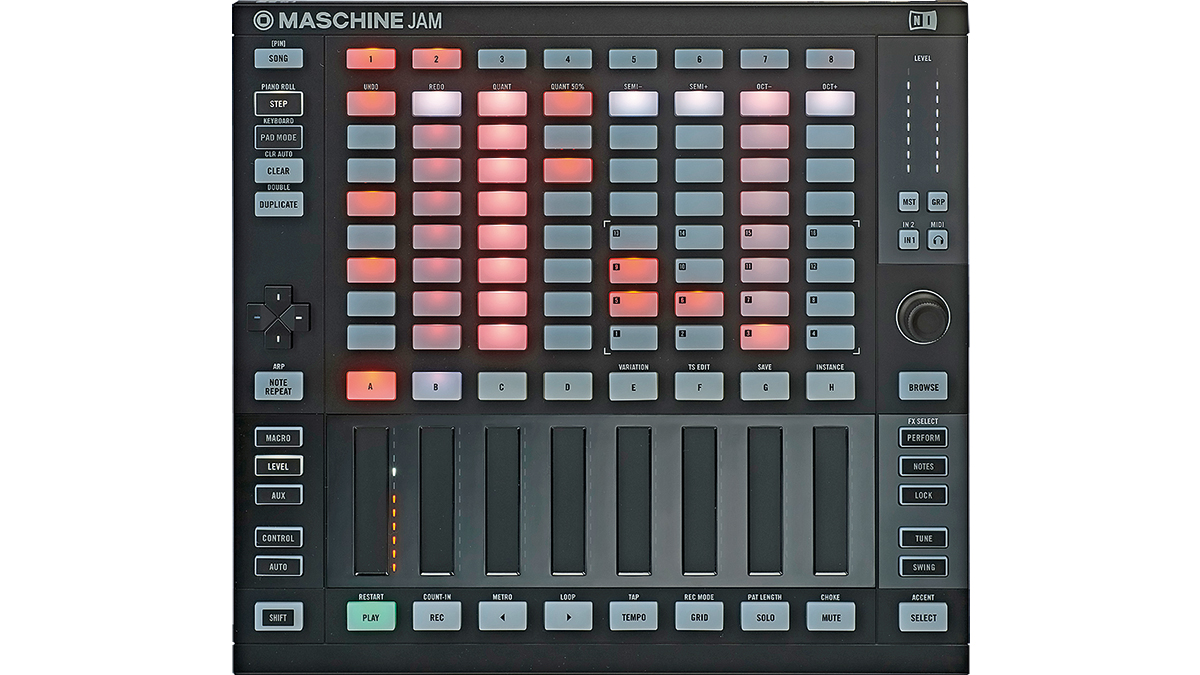
First impressions
When we got wind that Native Instruments was planning on releasing a new Maschine controller, we knew we had to get hold of one straight away.
Luckily, the Berlin manufacturer was able to get one to us before the launch, so we could get our sticky mitts all over it early doors and bring you our first thoughts on this new performance tool.
So without further ado, click through the gallery to see our initial impressions of the Maschine Jam.
Be sure to check back soon on MusicRadar as we bring you the full review.
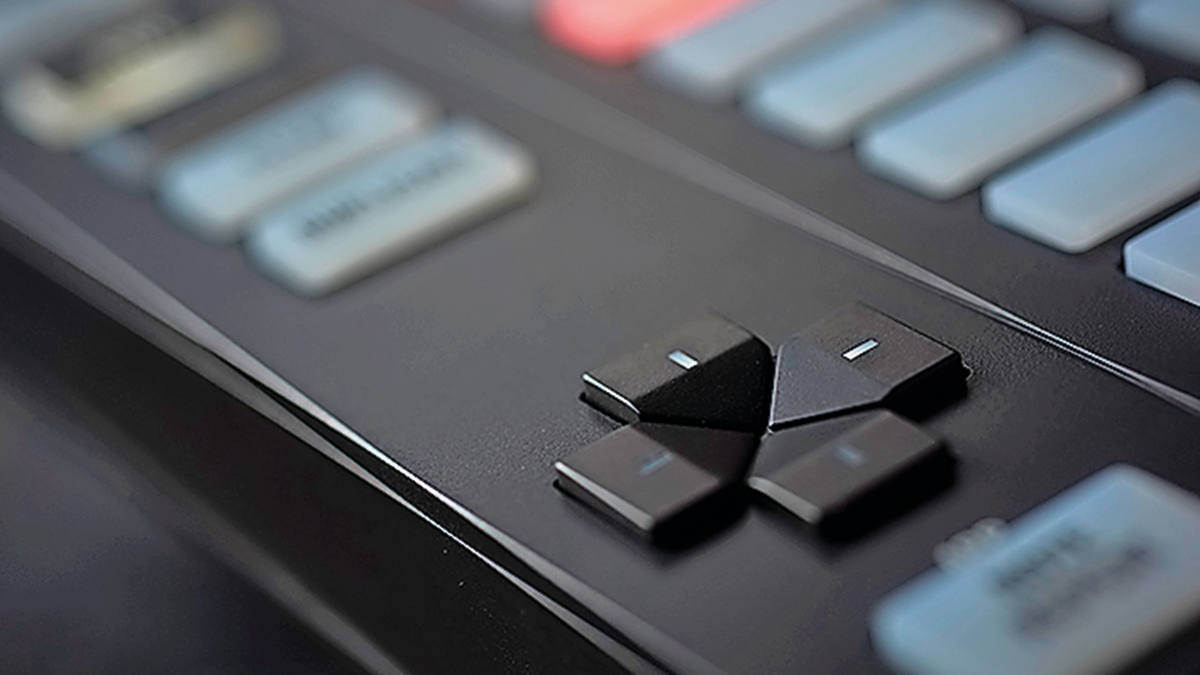
Not an evolution
Before we go any further, it’s worth making one thing clear, Jam shouldn’t be considered as a Maschine 3.0. In fact, far from it.
This new controller provides a completely new way of interfacing with the Maschine software, which remains largely unchanged; one that neither supersedes nor replaces the original hardware, yet provides a very different user experience.
It ditches the standard 16-pad layout synonymous with the classic ‘MPC’ workflow. Instead NI has plumped for the ‘Push’ approach with an 8x8 grid. And the more we look at it, the more it reminds us of an upside down Livid Base.
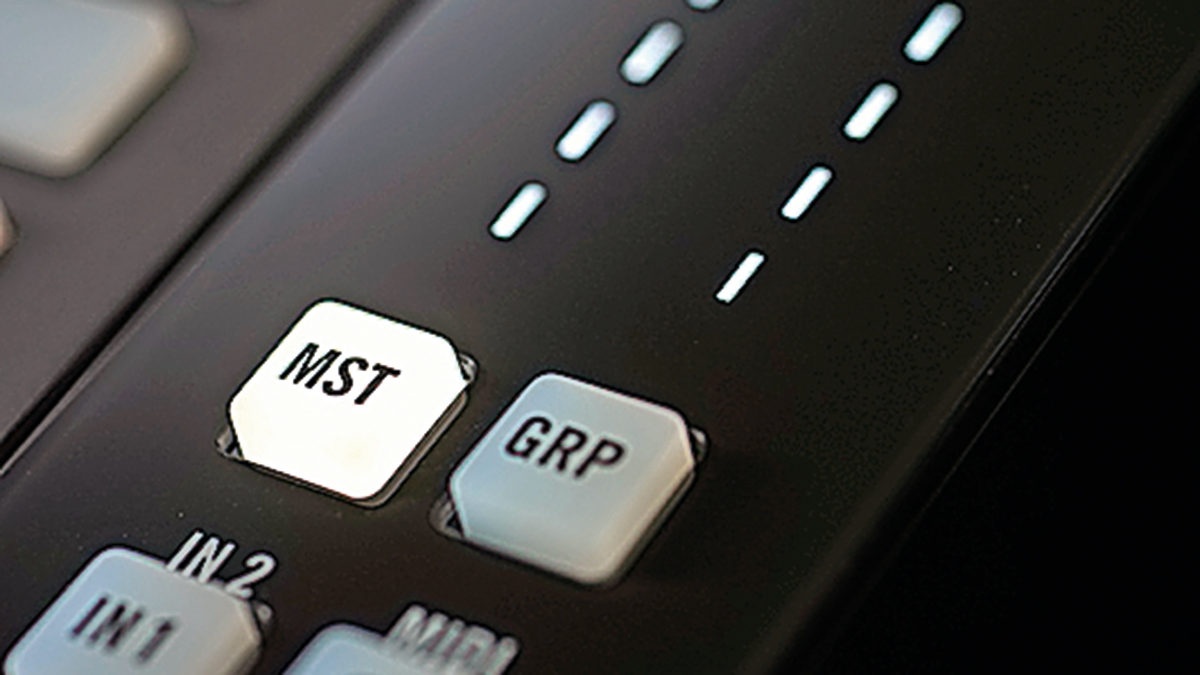
Built to last
While this control layout is all new, the Jam hardware is the exact same dimensions as Maschine MkII. The only difference is its flat, rather than sloped, profile, but it does come with a screw-on stand that angles the unit to sit flush with one of its siblings.
As is standard with NI hardware, Jam feels well-built and durable. The only truly ‘new’ elements here are the touchstrips, which NI tell us have been designed fresh to be as responsive as possible.
Connection-wise, Jam features an expression input but ditches the MIDI I/O of the MkII/Studio. Beyond that there’s just a single USB connection that provides bus power and connection to a host computer.
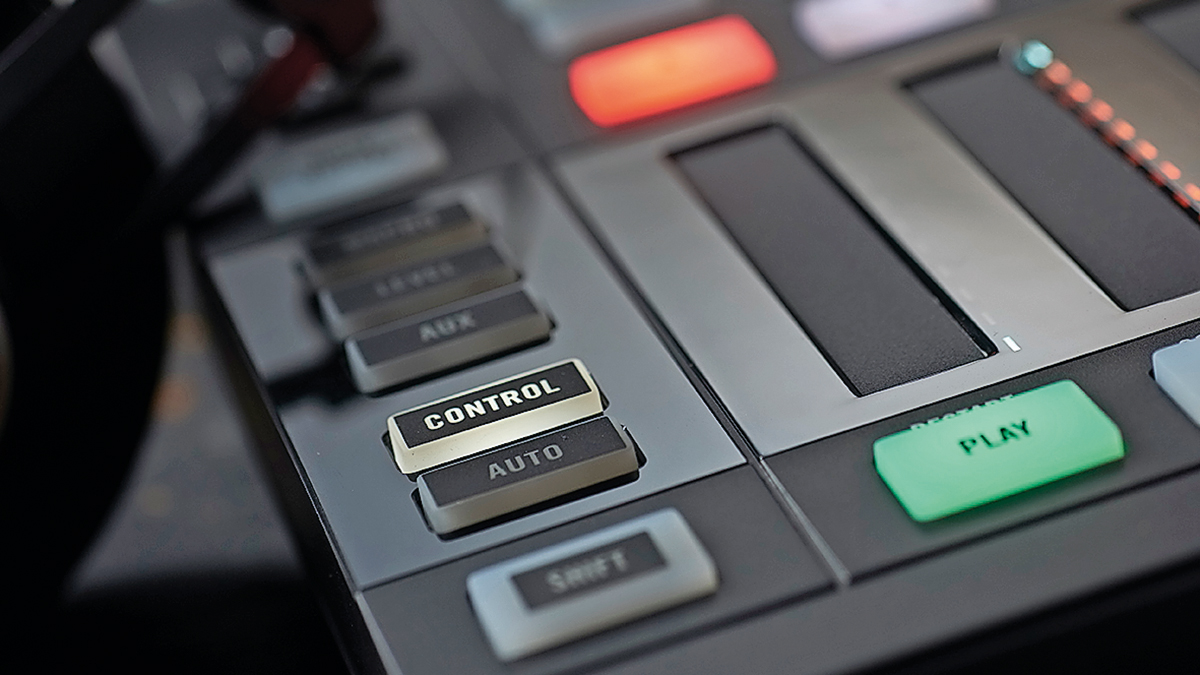
Touchstrips
As well as acting as faders and parameter controllers, Jam’s eight touchstrips’ primary role is to give a performance-friendly way to use effects, tweak sounds and record automation.
To this end, NI have added a new type of effect to Maschine - Performance FX. These are a range of creative effects including delays, filters and phasers, which – while offering deeper parameter configuration via the software - are designed to be controlled via a single touchstrip. This allows banks of Performance FX to be laid out across the eight strips, allowing for quick creativity in a live setting.
Setting up your own macros is even more exciting - allowing a whole range of instrument and effect parameters to be controlled via the touchstrips. Using this as a tool for performance or recording automation into tracks is invigorating.
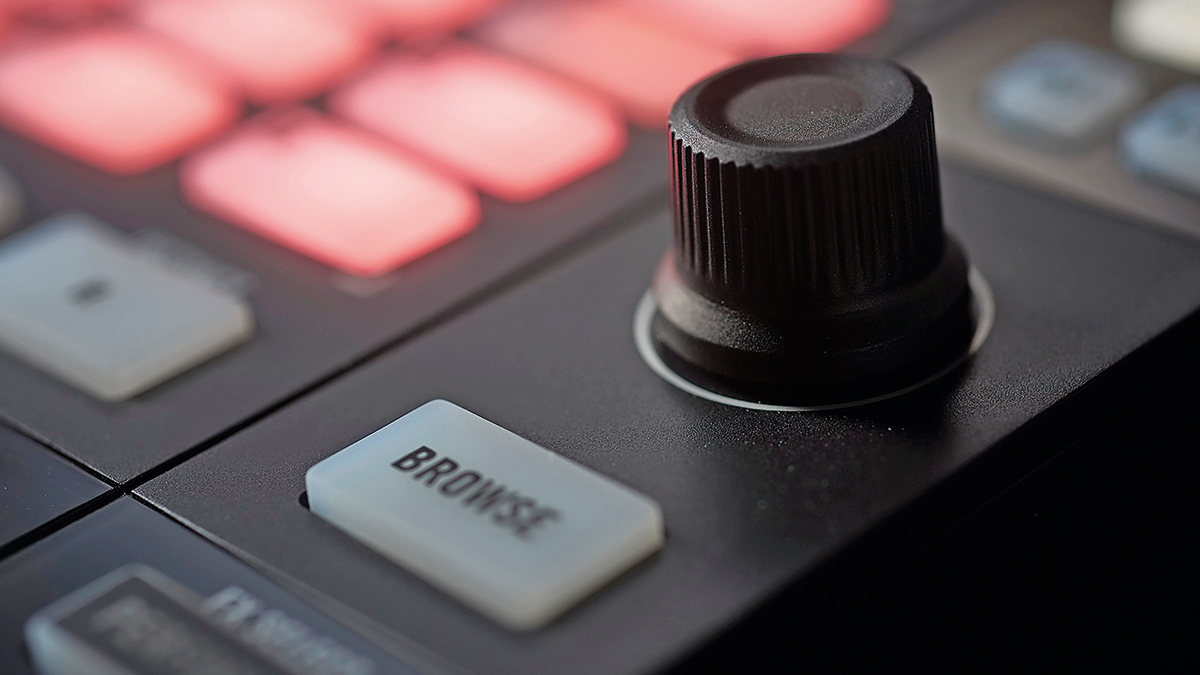
Browser history
Using Maschine’s browser with Jam is nowhere near as fluid without the built-in screens. The new pop-up browser is fine, but it doesn’t fold through sub-categories in the neat way that screens and multiple rotaries allow for, and generally feels like a clunkier system.
There are a few other functions that suffer from the lack of screens too. Jam doesn’t really engage with Maschine’s sample edit window in any meaningful way.
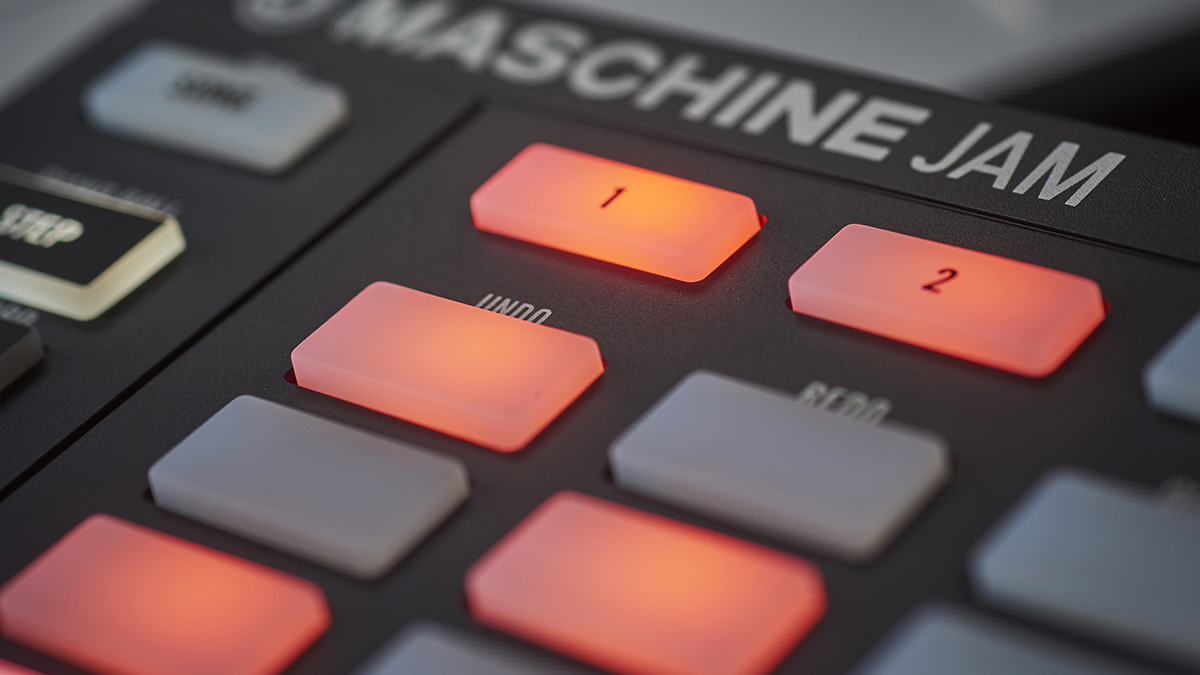
Sequencing modes
Jam massively improves on Maschine’s step-sequencing capabilities. Hitting the Step button switches the 64-pad grid into sequencing mode, with several different layouts on offer.
Hitting 4, or 8 along the top row of pads allows multiple sounds to be sequenced at once. In both modes, the 4x4 pad grid disappears, dedicating the entire 64-pad grid to four 16-step or eight eight-step sequencer grids.
In all modes, the buttons directly above Jam’s pad grid allow users to toggle between sequencer ‘tabs’, so patterns aren’t limited to the immediately available number of steps. Further still, a Shift press of the Step button turns the pad grid into a piano roll for melodic step sequencing.
To sum up, so far the Jam feels good, looks good and is a very powerful and impressive production system. That’s not to say you should rush out and sell your existing Maschine though. Maschine Jam and the existing Maschine controllers are effectively two sides of the same coin. By far the best experience during our early testing of Jam was using it alongside an existing Maschine MkII.











